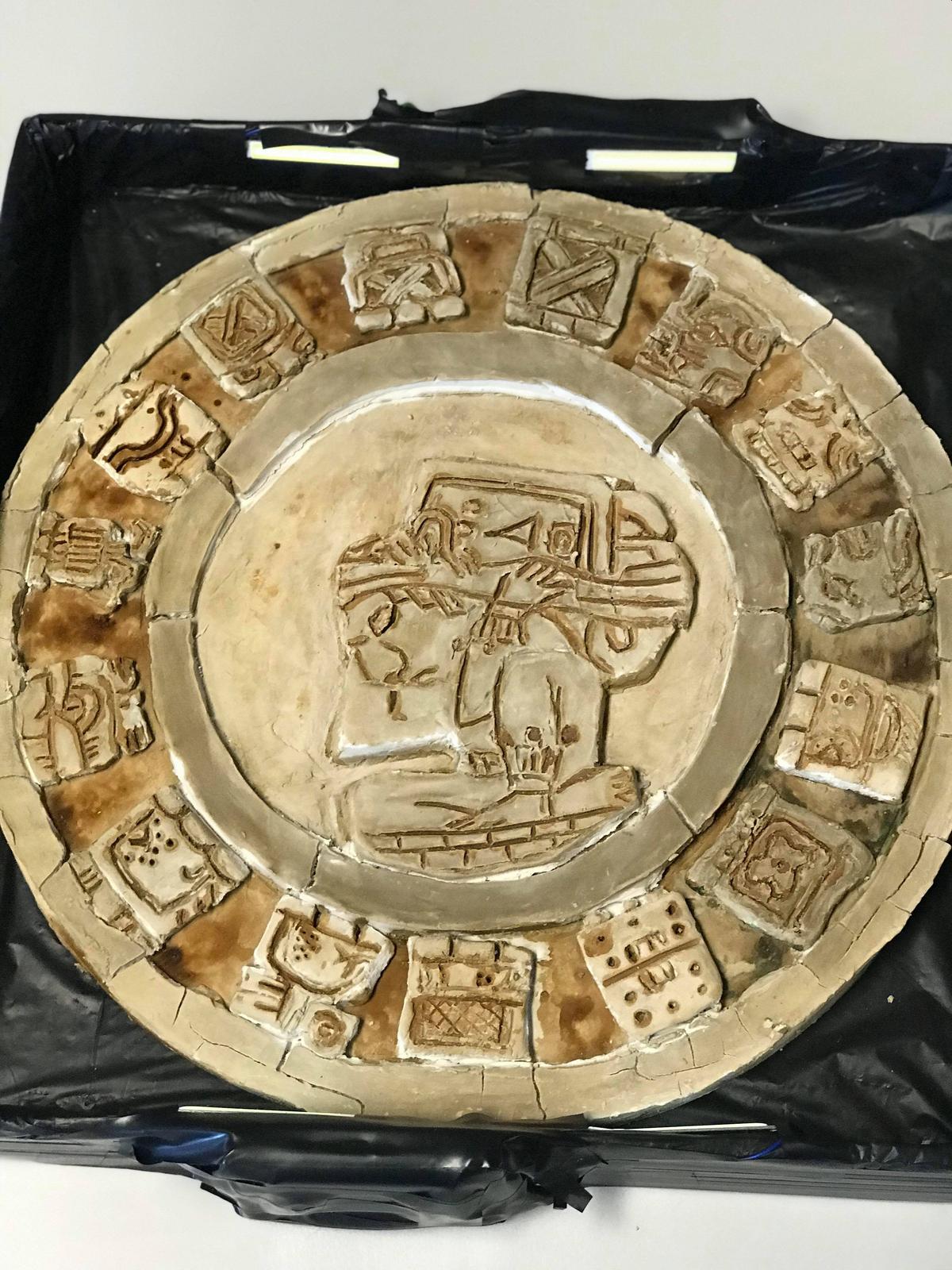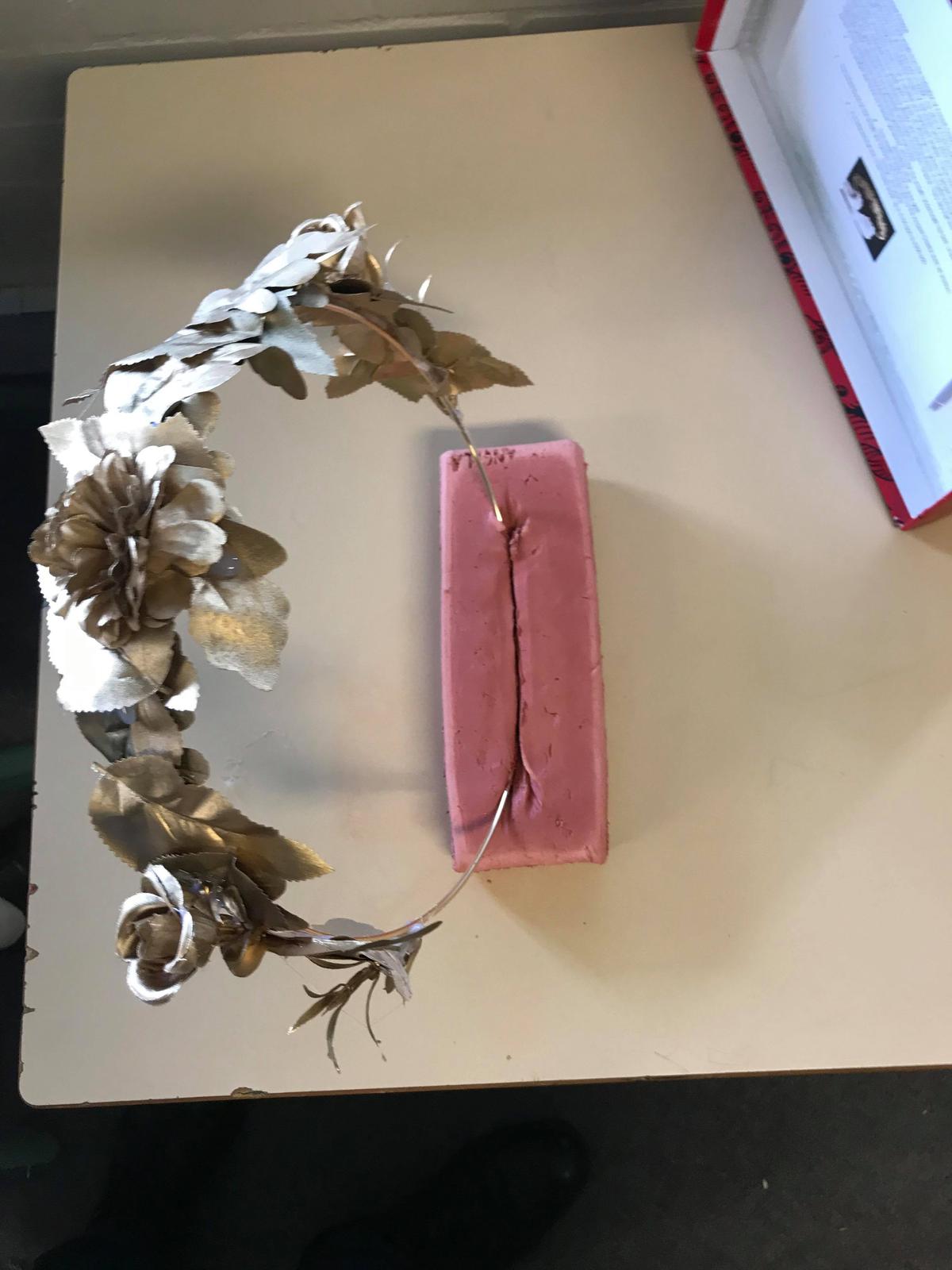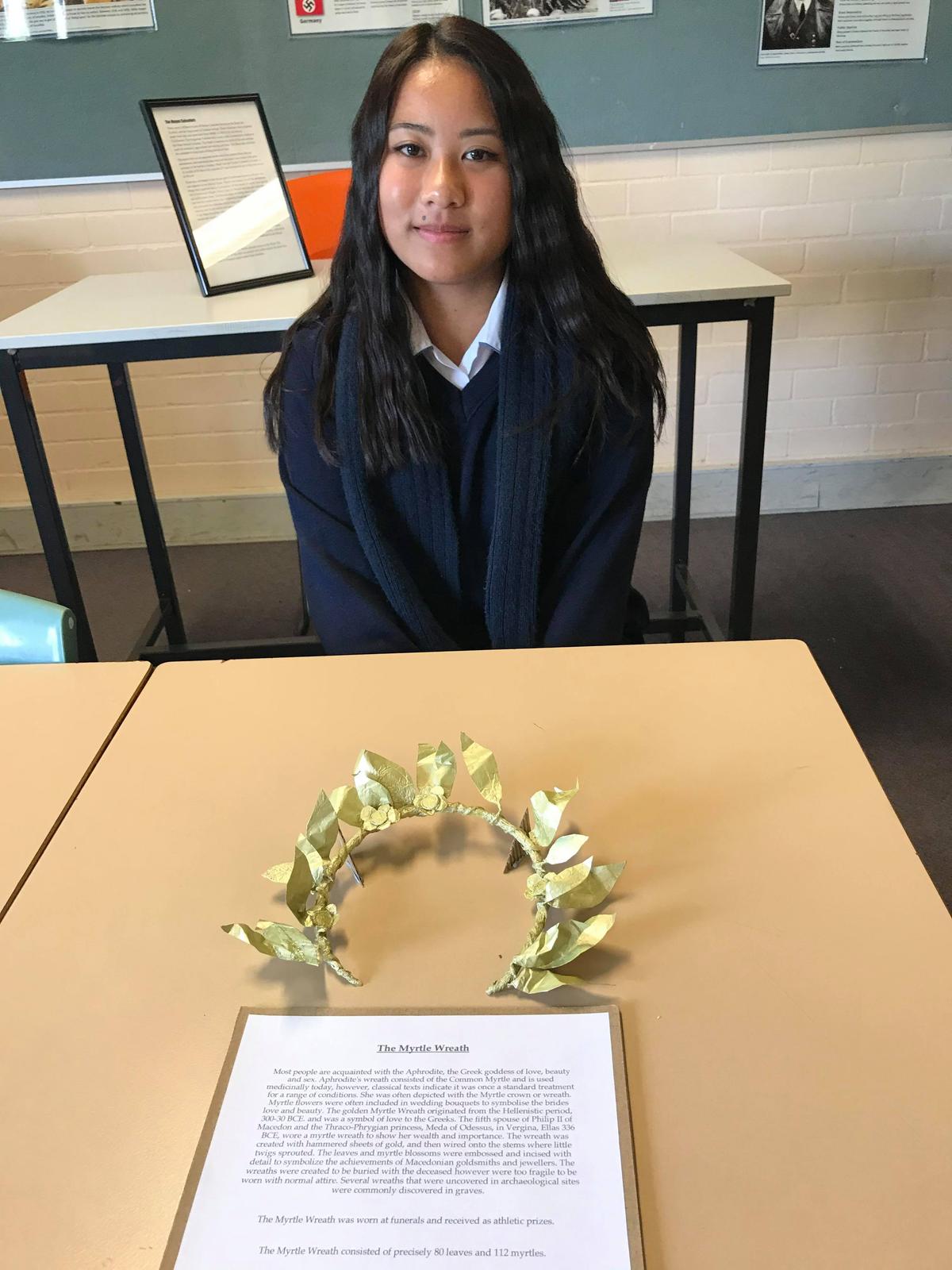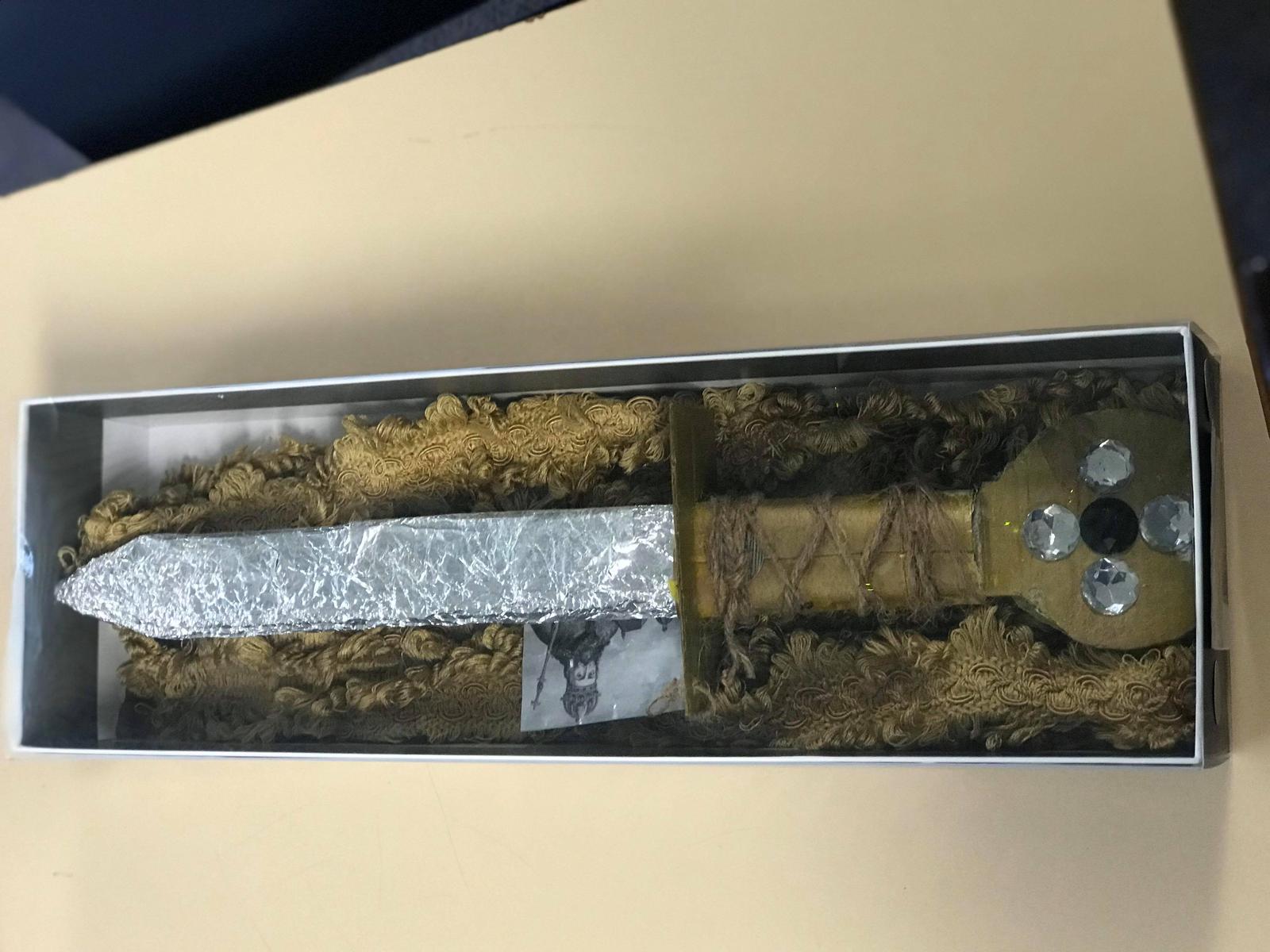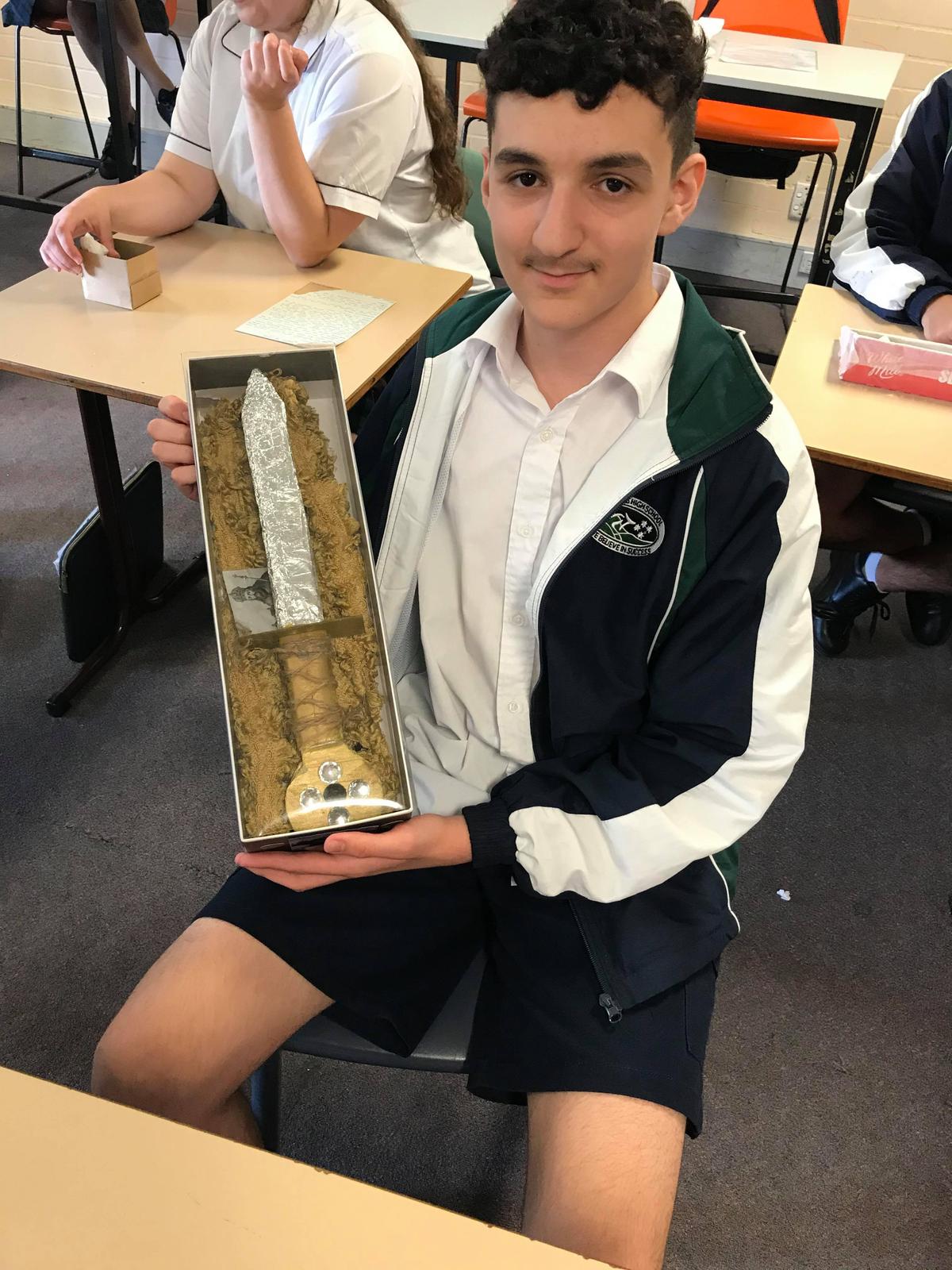Museum Exhibit
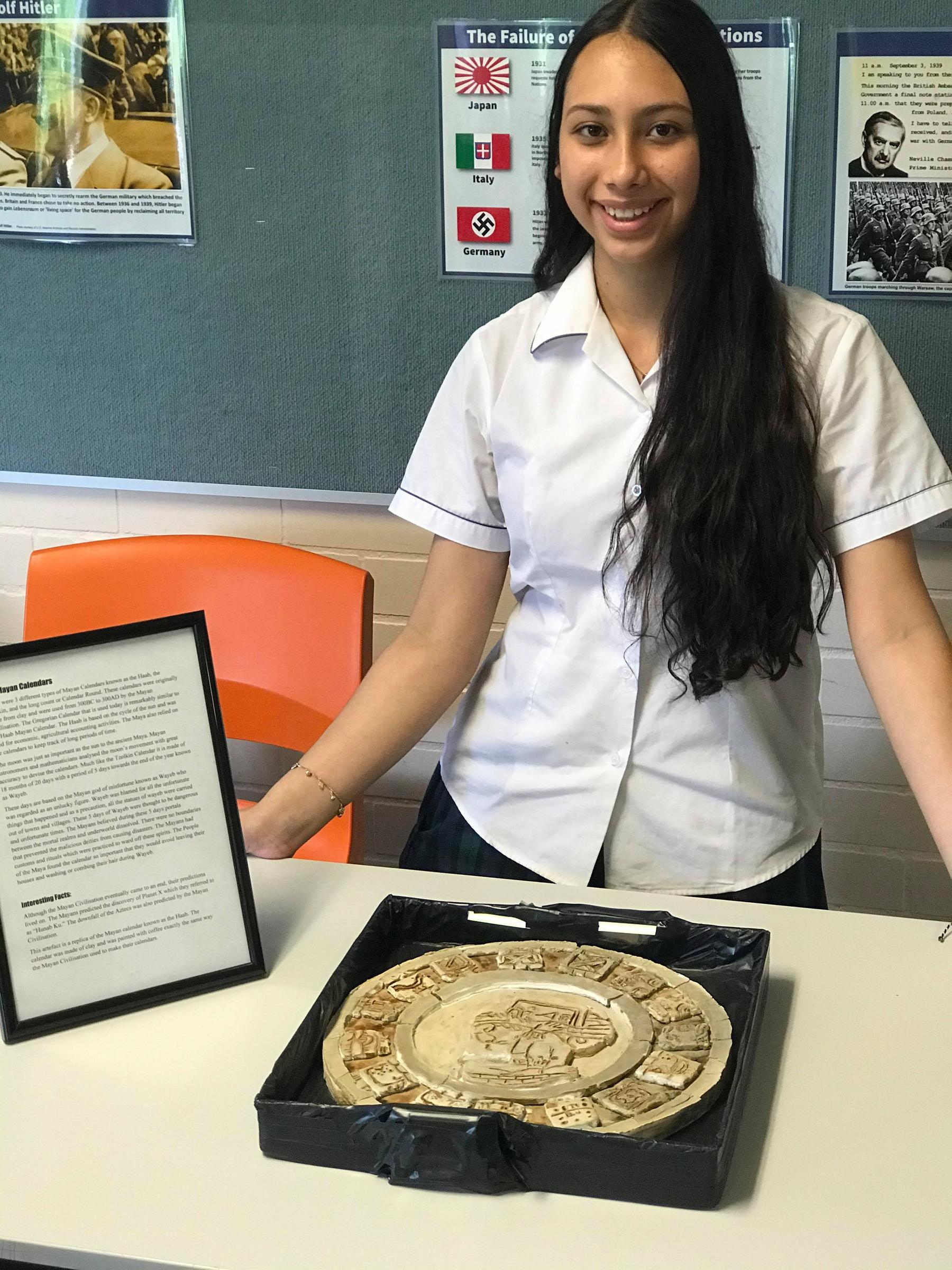
Enthusiasm for History
Mr Cupic’s Archaeology class has been working very hard this term on their museum exhibits. Archaeology (History Elective) is a subject that gives students who love History a chance to explore the past in a deeper way. The focus of Archaeology is to explore the past with a project-based approach. Some of the topics we have investigated this semester include World Myths and Legends and Museum Studies. Students were required to research and prepare a museum exhibit individually on a particular period, event or individual person of interest to them. Some of our students have written about what we have been doing in Archaeology this term.
The quality of the work from Year 9 and Year 10 students was very impressive and students really displayed their enthusiasm for History.
Mr M Cupic
History Teacher
Read some of our students’ stories:
Brittany Melendez- Lemus, Year 9
Archaeology is a subject that allows students who enjoy history to explore the past in a deeper way. In archaeology, we have learned topics such as archeological sites, the Mongols, the Spanish conquest of the Americas, myths and legends, and museum studies. This term students were asked to create an artefact that would be presented in a museum.
I decided to create a replica of one of the Mayan calendars known as the Haab’. I chose to create this artefact due to the connection it has to my Hispanic heritage. My Mayan ancestors created this calendar to keep track of time for agricultural and accounting purposes. Just like my ancestors I made this calendar the exact same way they did by using clay to construct it and coffee to paint it. It took approximately a week to construct it due to the amazing detail found in the calendar. While constructing the calendar not only did I learn more about my ancestors, but I also learnt about every piece of the calendar and what each hieroglyph meant. The 5 days of Wayeb were an interesting thing to learn about as the Mayan civilisation believed during these five days awful things would happen. The Mayans would avoid brushing their hair and washing themselves as they thought it would prevent horrible things from happening. This assignment was one of my favourites and Archaeology has been a great subject which I will definitely miss once finished.
Kuber Thakur, Year 9
As of Term 4, the Year 9/10 Elective History Archaeology class worked on crafting ancient artefacts as part of our final assessment. The flexibility provided by Project Based Learning allowed our class to compose our artefacts in a calm and stress-free environment, enabling myself and many others to take advantage of this refined form of learning whilst gaining thorough knowledge of our chosen artefacts. This elective was certainly a ball, providing new knowledge about the importance of history as well as fun. A massive thanks to Mr Cupic for sharing his facts and insight into human evolution and society’s past.
Kelly Kim, Year 10
The Archaeology elective is a class where students have the opportunity to study, in depth, about materials and remains of the ancient past. Museum studies have sparked the interest in students, their fascination with ancient artefacts and has allowed students creative freedom with the help of practical research and assessments.
I learnt about the golden Myrtle Wreath when my friend mentioned it during Archaeology, which inspired me to choose it as my assessment. The Myrtle Wreath was an artefact acquainted with the Aphrodite, the Greek goddess of love, beauty and sex. She was often depicted with the Myrtle crown or wreath. Myrtle flowers were often included in wedding bouquets to symbolise the brides love and beauty. The golden Myrtle Wreath originated from the Hellenistic period, 300-30 BCE. and was a symbol of love to the Greeks. The wreath was created with hammered sheets of gold, and then wired onto the stems where little twigs sprouted. The 80 leaves and 118 myrtle blossoms were embossed and incised with detail to symbolize the achievements of Macedonian goldsmiths and jewellers. The wreaths were created to be buried with the deceased however were too fragile to be worn with normal attire.
Just as the Macedonian goldsmiths and jewellers (without the real gold), I used aluminium foil to create leaves and hammered it until it was flat. Using this type of foil was difficult because it was fragile when flattened, making it more prone to be broken and teared. When it was coated with two layers of golden paint, it became more durable to damage. Honestly, this assessment was the most entertaining as it challenged my creative intellect and encouraged me to learn more about ancient Greek culture
Marios Yousif, Year 10
With effort comes reward, this assignment was handmade and took around four days to create. Charlemagne’s most prized possession, his sword, is one of the rarest and most treasured items in history.
Galas, a famous blacksmith in the medieval era took three full years to forge the sword which inspired me to create it as my chosen artefact. The sword features a lustrous blade encrypted with texts and symbols which report on Charlemagne’s date of birth and other special occasions in his lifetime. I faced many challenges when creating the sword, one of which was working with the resources I only had in my house, this made it hard for me as I was limited on resources. Overall, I chose to create Charlemagne’s sword as my artefact as its background information and aesthetics caught my attention which inspired me.

